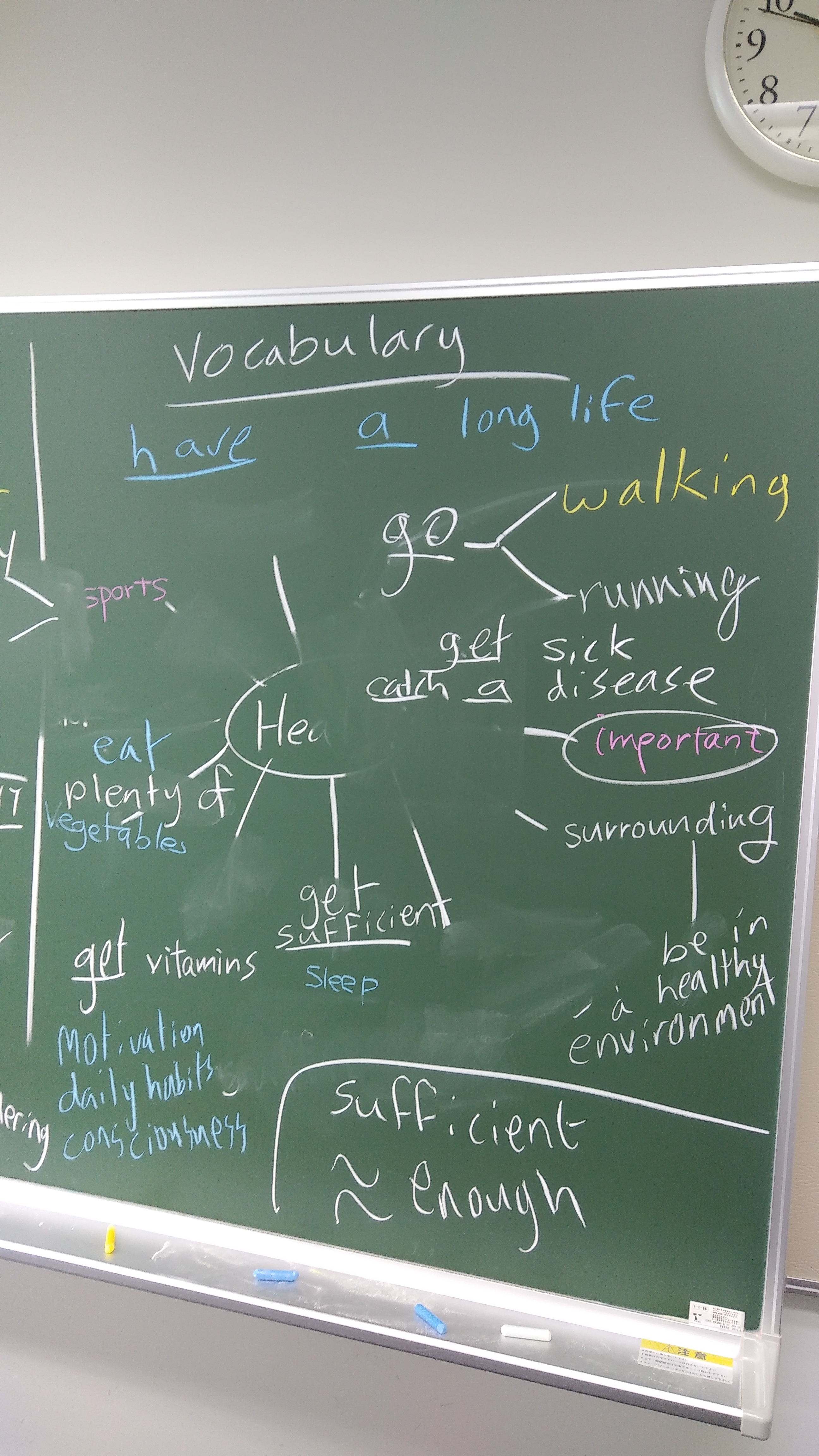Ooh, Marc. Your classes always look like you give your students loads of freedom.
Yes, it does look that way but sometimes I still feel like I’m spoonfeeding. So today, I ditched my plan and tried an experiment.
To prepare for a discussion on health. I set stations that the learners would practice at.
- Vocabulary brainstorming at the board.
- Discussion planning.
- Fluency practice.
- Reading.
- Mini-discussion practice.
I suspected that the learners would just pick out single words. I later elicited collocations.

Or functional language planning. What can you say to open a discussion, control a discussion, agree, disagree politely, change the subject and end the discussion. Not amazing.
Teacher led choral, response drills, function drills. Popular with the learners but not my bag. Useful to an extent.
Read the handout then discuss it. Response task on the back. Reading has a gloss and few if any ‘hard’ words.
Set a task (actually part of the exit task). The post-task was to report to me three best balances of nutrition and taste for the discussion.
How did it go?
Well, I’d be lying if I said everything was amazing. The vocabulary was very successful with my morning classes, and OK with the afternoon class. The reading was basically spot on and the mini discussions went well. The discussion planning kind of sucked a bit. Some learners took over and derailed the activity and it took a while to get back on track.
All in all, not bad, though. I’ll probably try something similar again but I definitely want to tweak the language planning, perhaps with a handout. But that takes the autonomy away.
Like this a lot Marc.
Silly Q time – so the ss move round from 1 station to the next, right? Once they’ve done all the stations they’re ready for the task I guess.
Gonna give this a go!
Actually, that was the plan, but many chose only their original, then the reading before the final discussion. The readers looked at vocabulary, mainly. It was alright, like, but I expected a bit more variation.
So, just to be clear, you don’t force them to do X number of stations or change in lockstep? Not, say “do 3 out 5 stations, you choose which you need most?”. And is the final discussion you mentioned whole-class?
You’re exactly right. The learners generally chose which stations to go to, except some just wanted to stay on fluency practice so I had to direct them to go elsewhere. The final discussion was a whole-class, medium-sized group activity.
And cheers!
Letting them choose which station to go to gives them a choice, which I like & think the ss like, too. Wonder if they choose what they need, find easy/difficult to do … I ‘ll have to ask my ss when I do this!
P.S. is the soundbite at the start of us post a frequent one you hear? Just curious.
It’s flattery I’ve heard from people who don’t know the chaos and horror I worry about.
Ha. Because the half of your brain that isn’t going “This is learner autonomy. This is awesome.” is consumed with exactly that: horror and worry.
Even when I teach fixed, whole class activities I’m consumed with horror and worry!
I see ^^
I guess for me it’s always weighing between “teaching” and guiding students to being able to learn on their own, without teachers. Wonder if it’s to do with the level. Also, it seems to me that in classes with a prescribed syllabus the students are less autonomous. But what is the reason and the consequence? Great post, Marc, thanks!
Cheers Kamila. Yeah, there is definitely a trade-off between level and anxiety as to how much autonomy can reasonably be provided. Luckily the lowest in these classes was about A2.